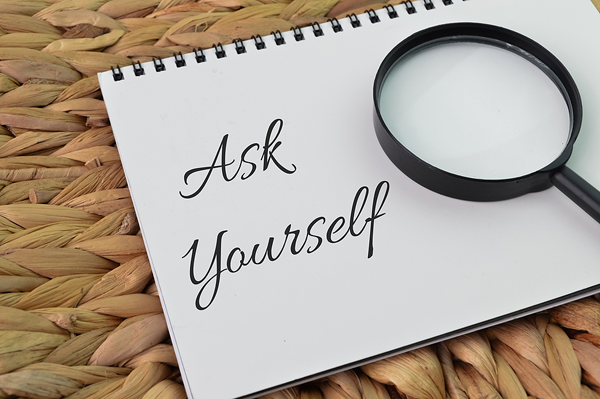Well, according to Merriam-Webster, a caption is “the explanatory comment or designation accompanying a pictorial illustration usually as an underline or overline.” So, translated into something that makes sense to the rest of us, it is the text that shows up under an image on websites, magazines and newspapers, and social media posts.
We’ve all heard that a picture is worth a thousand words, but a photo caption puts the image in context with the article as a whole. A caption explains the photo. An effective photo caption draws your readers in and helps to tell the story you hope to convey, whether it is a web page, a news article, or a social media post.
An exceptionally outstanding caption can even change the mood of the image and turn an average picture into an iconic photograph like the one most of us recognize instantly that captures an important day in history called VJ day, Victory over Japan, August 15, 1945. Another heart-stopping example is this one with the simple caption, The vulture and the little girl, which brings tears to my eyes every time I see it.
Download Our FREE eBook: How to Create an Exceptional School Website
What makes a good caption?
A caption can be just a few words or as long as several sentences, and it typically provides information about the image and its connection to the article or post.
It is important to remember that photo captions are the most read text in a publication (only headlines have a higher readership than captions). So, when we want our readers to be engaged and informed, our use of captions matters.
Often people will only scan the pictures and not read the story to which it is attached, so captions can help provide information without simply repeating the content in the article or social media post.
A good caption will describe something that isn’t obvious. If a photo caption only describes what is evident in the photo, it is a bit useless. If you don’t provide any additional information, you are doing a disservice to your readers.
A good caption will describe details that are not obvious, like the location, the backstory, or the specific event taking place in the photograph. Let your caption intrigue your readers to investigate the story further.
For example, if Becky is holding the spelling bee trophy, instead of a caption that reads, “Becky holds her award,” say something they can’t see. Describe the honor, how competitive it was, and what it says about the focus of your school, your curriculum, and student success.
Good captions will not repeat aspects of the story, but the caption and story will complement each other and not be repetitive.
We’re all aware of other types of captions, like closed captioning on movies and video that displays the text or a translation of the audio. But today we’ll only cover photo captions, as those are the most commonly used on your school website and on your school social media. However, using closed captioning for all school videos is an accessibility requirement, so be sure to include those as well.

Let your photos lead the way.
The best publications actually have full-time folks on staff whose job is to write captions for pictures and images in their magazines and newspapers.
According to David Brindley with National Geographic, these staffers will often interview the photographers and even talk to the people in the photos to gather accurate information and do their jobs well. They will gather information by digging for background or talking to an expert who can lend more information. They will ask for the context of those involved, like what happened right before or right after the picture was captured. Sometimes they use quotes by these experts in their captions.
Even when you are using a stock photo, make good use of a caption. Let it be a bit of a teaser for the story or post, or use it as a call to action.
Of course, standards of accuracy, clarity, completeness, and good writing are as high for captions as the rest of your writing. But with captions, let them be to the point and as concise as keeping your readers’ interest allows.

Tips for writing photo captions that will enhance your content
There are many tried and true tips for creating effective and engaging captions for your content, so let’s begin with those:
Start by checking your facts.
This includes assuring that photo details are accurate, like correctly identifying the people in your picture. It includes accurate credit lines and photo details.
Use conversational language.
Write your caption as if you are speaking to a friend. This may also mean avoiding cliches.
Use the present tense.
Present tense adds immediacy and impact and draws in your reader. It’s a bit like the reason we avoid passive voice; it puts us closer to our readers’ perspective. Present tense puts your reader there in the here and now. Don’t distance them from the action.
Use humor when appropriate.
Don’t try for funny captions if the picture is not, but when it is, use humor to highlight your picture and bring a smile to your reader.
Add new information.
Instead of stating the obvious by restating what is in the image, add context that might not be immediately evident. This may require a bit of research and finding out what happened prior to or after the photos were taken to add information and interest.
Let interest determine the length.
Typically, one to three sentences, in active voice, is recommended to keep your readers’ interest. However, don’t be afraid to add a longer caption when more information will help your readers understand the story or situation and provide more interest.
A few years ago, one study found that readers spent 30% more time on longer and well-developed captions than on short or incomplete captions (which received little attention). So, if well done, take the opportunity to pique your readers’ interest in your story by taking the time to write a compelling photo caption.
Use quotes when possible.
A quote can very effectively capture interest. So, when it works, use them.
Include descriptions.
Good descriptions not only help clarify and avoid misunderstandings, but they make the image more engaging.
For example, “the red-headed girl on the left…,” or “the sprinter in the far left lane…,” can help focus the reader’s interest and get them to see what you want them to notice.
Use dates for historic photos.
When an image is historical in nature, be sure to include the date it was taken. For example, “Our school’s first Superintendent, Dr. David Willcox, 1989.”

Avoid judgments
This may require a bit of research on your part (or at least a conversation with the photographer) but avoid making a judgment based only on your observation.
For example, a “disappointed fan…” might actually not be unhappy at all but just not very photogenic. Don’t make assumptions.
Avoid starting captions with certain words.
Try to avoid starting your captions with the articles ‘a,’ ‘an,’ or ‘the.’ They simply aren’t necessary and take up valuable captioning room.
For example, instead of saying, “The high school jazz orchestra takes 2nd in competition,” say “High school jazz orchestra takes 2nd in competition.”

Social media and captions
There is no place more photos are shared daily than on social media. On Instagram alone, 95 million photos are shared daily. To take advantage of all your school social media posts, and in particular, to create a good Instagram caption, take advantage of some of these same tips we’ve mentioned previously. In particular, for social media, add these tricks:
- Put important information first. Since you only have 2,200 characters on Instagram, your captions are cut off after a few lines.
- Include a call to action. Asking your readers to “double-tap (like),” “tag a friend,” or “click on the link in bio,” allows for interaction and engagement—a call to action or CTA. Just remember to ask! Those clickable links are valuable in social media posts.
- Use hashtags and emojis wisely. The hashtag and emoji can be used to leverage engagement if used wisely, but don’t get carried away and overdo it. Many social media experts recommend no more than two hashtags per post. And, be sure your hashtags are relevant to your post. Keep your captions clean and don’t clutter them with too many emojis and/or hashtags. But, don’t be afraid to use a branded hashtag either.

Ask yourself…
Need some ideas to take your photo caption to the next level? Try these questions when you are stuck for caption ideas—and see what ideas they inspire:
- Why should someone care about this photo/image?
- Are there some interesting details in this image that I want my readers to notice?
- What is the backstory of this photo?
- What can’t the reader/viewer see in this photo?
- Does this image/photo support our school culture and brand personality?
- What happened before or after this photo was taken?
- Will this caption copy encourage engagement with my readers?
Practice makes perfect, or at least better
While you are applying captioning tips to create effective photo captions, you may want to consider using a simple caption-writing formula to get you started. A successful formula will also save time. One common formula is [proper noun location] [verb] [direct object] during [proper event name] at [proper noun location] in [city] on [day of week], [month] [date], [year]. [Why or how.]
An example using this formula might look like this: “Varsity basketball players (noun) battle (present-tense verb) rivals (direct object) at Arizona Regionals (proper noun location) in Phoenix (city) on Friday (day of the week), February 25th, 2022 (month, date, year).”
The more you practice writing captions, the more engagement you will create. It will be worth the time you spend. Just remind yourself that many readers will only look at your photos and read the captions.
Take the time to create several versions and experiment with a few different approaches before you pick what works best. What are your readers taking away from our post or article if that is all they see? Make those photo captions count.

Be trustworthy
Finally, and this is quite important but unfortunately becoming increasingly more rare in the world of journalism, we must remember that what we print will be considered fact (or should be).
Our readers should be able to trust what we write—that what is in the post, the page, or the article is honest. They will assume we’ve done our fact-checking and that what we are telling them in our caption and in our content is accurate. So, do it right. Do the research, Ask the right questions. Be accurate. Be trustworthy.
This is particularly true of a school. Parents expect your content to be accurate and error-free. You’re educators, after all, so what else would they expect from those who educate our nation’s children?
However, you must earn that confidence in your trustworthiness, and that includes what you publish on your school website and your social media.
Be accurate. Check your spelling and grammar. That includes your photo captions since those are more likely to be read than the rest of your content!
Post by Bonnie Leedy, CEO, School Webmasters, LLC.








